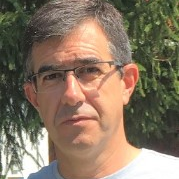Channel Measurements, Modelling and Simulations for Future Wireless Communication Systems
A special issue of Electronics (ISSN 2079-9292). This special issue belongs to the section "Microwave and Wireless Communications".
Deadline for manuscript submissions: closed (30 November 2022) | Viewed by 23245
Special Issue Editors
Interests: wireless communications; channel modeling; channel measurements
Special Issue Information
Dear Colleagues,
Wireless channel research has decades of history, dating back to the development of the first mobile and personal communications. In recent years, there has been a growing demand for multimedia services, high transmission speeds, and global connectivity, which has led to the emergence of new radio technologies and wireless communications systems. In this context, knowledge of the propagation channel is essential for the flexible and practical design, optimization, and deployment of these systems. Currently, research into wireless channels is wide variety of challenges, such as channel modeling, parametrization, and simulation in different frequencies and communication scenarios.
The objective of this Special Issue is to document the last advances in channel measurements, modeling, and simulations for future wireless communications. The topics of interest include, but are not limited to the following:
- Centimeter and millimeter wave propagation;
- 5G and beyond propagation channels;
- Vehicular (V2X) propagation channel;
- High-speed railway (HSR) channels;
- Tunnel and confined environments;
- Air-to-air propagation channels for unmanned aerial vehicles (UAVs);
- MIMO and massive MIMO channels;
- Channel parameters estimation methods;
- Channel sounders configuration and measurement techniques;
- Hardware and software channel simulators.
Prof. Dr. Lorenzo Rubio
Prof. Dr. Vicent Miquel Rodrigo Peñarrocha
Guest Editors
Manuscript Submission Information
Manuscripts should be submitted online at www.mdpi.com by registering and logging in to this website. Once you are registered, click here to go to the submission form. Manuscripts can be submitted until the deadline. All submissions that pass pre-check are peer-reviewed. Accepted papers will be published continuously in the journal (as soon as accepted) and will be listed together on the special issue website. Research articles, review articles as well as short communications are invited. For planned papers, a title and short abstract (about 100 words) can be sent to the Editorial Office for announcement on this website.
Submitted manuscripts should not have been published previously, nor be under consideration for publication elsewhere (except conference proceedings papers). All manuscripts are thoroughly refereed through a single-blind peer-review process. A guide for authors and other relevant information for submission of manuscripts is available on the Instructions for Authors page. Electronics is an international peer-reviewed open access semimonthly journal published by MDPI.
Please visit the Instructions for Authors page before submitting a manuscript. The Article Processing Charge (APC) for publication in this open access journal is 2400 CHF (Swiss Francs). Submitted papers should be well formatted and use good English. Authors may use MDPI's English editing service prior to publication or during author revisions.
Keywords
- radio wave propagation
- wireless channels
- channel modeling
- channel measurements
- channel sounders
- channel simulators
Benefits of Publishing in a Special Issue
- Ease of navigation: Grouping papers by topic helps scholars navigate broad scope journals more efficiently.
- Greater discoverability: Special Issues support the reach and impact of scientific research. Articles in Special Issues are more discoverable and cited more frequently.
- Expansion of research network: Special Issues facilitate connections among authors, fostering scientific collaborations.
- External promotion: Articles in Special Issues are often promoted through the journal's social media, increasing their visibility.
- e-Book format: Special Issues with more than 10 articles can be published as dedicated e-books, ensuring wide and rapid dissemination.
Further information on MDPI's Special Issue polices can be found here.






